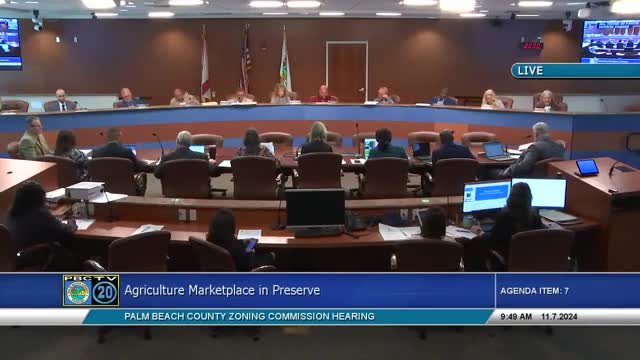County adopts crucial flood prevention ordinance changes
November 08, 2024 | Palm Beach County, Florida
This article was created by AI summarizing key points discussed. AI makes mistakes, so for full details and context, please refer to the video of the full meeting. Please report any errors so we can fix them. Report an error »

In a recent government meeting, officials discussed significant modifications to the Unified Land Development Code (ULDC) concerning the flood damage prevention ordinance. Doug Wise, alongside Jackie Anderson, the certified floodplain manager, presented the necessary changes mandated by the Federal Emergency Management Agency (FEMA) as part of an update to flood maps.
The proposed amendments are primarily driven by a FEMA policy issued in February 2020, which redefined how agricultural and non-habitable accessory structures are classified. Under the new guidelines, these structures must now be elevated or dry flood-proofed, rather than utilizing wet flood-proofing methods, which allow water to enter and exit the buildings. This shift aims to enhance flood resilience in the community.
A key aspect of the changes is the requirement for a variance for any agricultural structure or non-habitable accessory structure seeking to employ wet flood-proofing. This measure is intended to ensure stricter compliance with flood prevention standards.
Additionally, the meeting highlighted the importance of maintaining Palm Beach County's Community Rating System (CRS) classification. Currently rated as a class 5, the county risks downgrading to class 9 if it fails to implement the updated foundation and elevation requirements for manufactured buildings, as outlined in a January 2021 addendum to the CRS coordinator's manual.
The modifications also include new size limitations for non-habitable accessory structures that can be wet flood-proofed without a variance. Furthermore, the county will adopt new coastal flood hazard designations, aligning performance standards for coastal A zones with those of high wave velocity zones (V zones), in response to anticipated wave action.
These changes reflect a proactive approach to flood risk management, ensuring that the community adheres to updated federal standards while enhancing overall safety and resilience against flooding events.
The proposed amendments are primarily driven by a FEMA policy issued in February 2020, which redefined how agricultural and non-habitable accessory structures are classified. Under the new guidelines, these structures must now be elevated or dry flood-proofed, rather than utilizing wet flood-proofing methods, which allow water to enter and exit the buildings. This shift aims to enhance flood resilience in the community.
A key aspect of the changes is the requirement for a variance for any agricultural structure or non-habitable accessory structure seeking to employ wet flood-proofing. This measure is intended to ensure stricter compliance with flood prevention standards.
Additionally, the meeting highlighted the importance of maintaining Palm Beach County's Community Rating System (CRS) classification. Currently rated as a class 5, the county risks downgrading to class 9 if it fails to implement the updated foundation and elevation requirements for manufactured buildings, as outlined in a January 2021 addendum to the CRS coordinator's manual.
The modifications also include new size limitations for non-habitable accessory structures that can be wet flood-proofed without a variance. Furthermore, the county will adopt new coastal flood hazard designations, aligning performance standards for coastal A zones with those of high wave velocity zones (V zones), in response to anticipated wave action.
These changes reflect a proactive approach to flood risk management, ensuring that the community adheres to updated federal standards while enhancing overall safety and resilience against flooding events.
View full meeting
This article is based on a recent meeting—watch the full video and explore the complete transcript for deeper insights into the discussion.
View full meeting